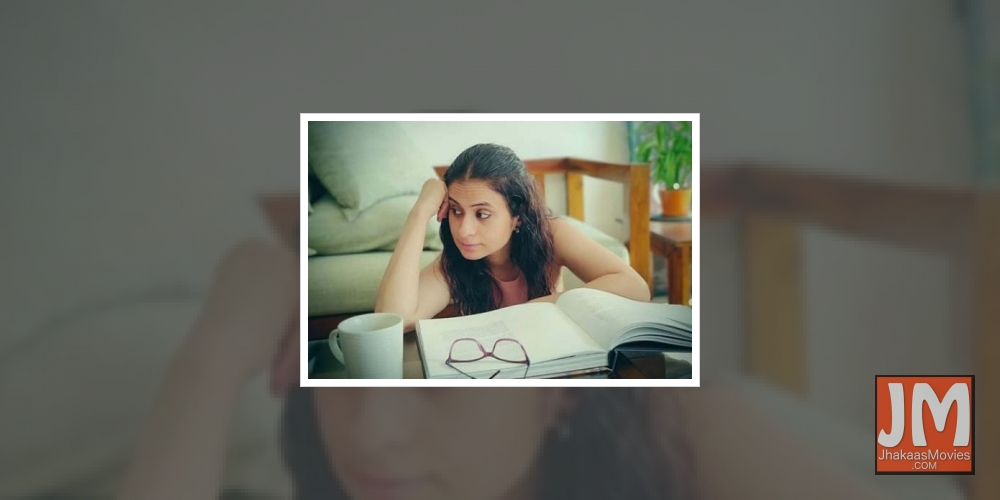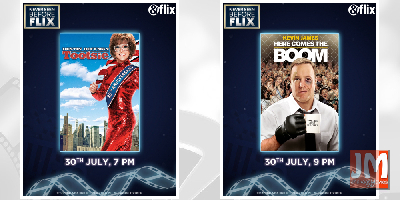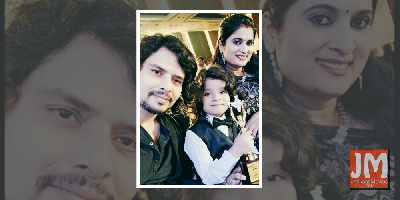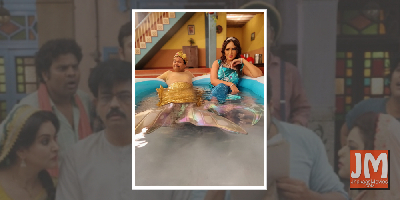 Aan Tiwari honoured with Best Child Actor award for Baal Shiv
Aan Tiwari honoured with Best Child Actor award for Baal Shiv Ghategi rahasymayi ghatnaye!
Ghategi rahasymayi ghatnaye! Amazon Prime Video unveils the 2021 Festive Line-up; brings a heady mix of Indian and International titles on the service
Amazon Prime Video unveils the 2021 Festive Line-up; brings a heady mix of Indian and International titles on the service Release: Music video of, Yeh Haalaath, from Mumbai Diaries 26-11
Release: Music video of, Yeh Haalaath, from Mumbai Diaries 26-11 Bhumi Pednekar feels she shares feel-good value with Akshay Kumar on screen
Bhumi Pednekar feels she shares feel-good value with Akshay Kumar on screen
OTT Gold Rush: Big bucks for makers, sawdust for backers (Column: B-Town)

BY VINOD MIRANI
The cinemas have been closed for over seven month now. There was no new entertainment on television either for a long time. How long could you see repeat telecasts on the television? And we were all quarantined. The first few months were tough. Depending on where you lived, you had access to nothing. No transport, no restaurants, no online orders.
The only stuff available was milk, medicines and some daily necessities. Even for that your movement was restricted and so were the timings for the vendors!
Worst of all, there was no alcoholic drinks available. One could not see the logic behind this move by any government. Alcohol would have actually helped keep people away from the streets and at home.
India does not have the culture of seeking redressal from psychiatrists for a couple of reasons -- faith in religion and family support. In the age of nuclear families, there was little of the last one.
The only alternative for the forced house arrest were the various OTT streaming platforms. You could not venture out and brave the coronavirus. Not that any entertainment was available.
The OTT streaming platforms got a perfect opportunity to deliver entertainment right into people's drawing rooms. OTT as a concept was not all that new to India. YouTube has been around for years, but was not yet identified as OTT. The platform provides just about every kind of entertainment, general knowledge, political content, movies, music, news content, food and travel, Name it and it was and is all available here.
Unfortunately, YouTube was known to people only for music videos. Nobody really cared for the other content available. For one thing, the channel was free and a reason why few really explored it fully. The other and main reason being, people sought outings and that meant taking in a movie and dining out.
The corona lockdown made people realise that life can be lived without a lot of things they considered as a way of life and took for granted. In the metros, building societies forbade entry of outsiders as well as the citizens' movements around town. No supplies, not even newspapers. Cinema-going was not even a possibility.
The people learnt to go to toilet without newspapers, survive without a lot of things they took for granted, especially the weekly outings. Be it cinema, drama, eating out or whatever they did over the weekend.
That is when the run for the OTT platforms started with more frenzy than the great American Gold Rush.
The OTT streaming platforms like Netflix and Amazon, which were around for a while in India, filled in for the outdoor entertainment. Many more followed. These platforms thought it necessary to have a healthy repertoire of movies, because Indians were addicted to movies rather than episodic programmes.
But, unfortunately, what these streaming platforms ended up buying was products few people would want to watch; most of them had no face value and a few that did, lacked in content and treatment. "Gulabo Sitabo", for example, was not appreciated despite having Amitabh Bachchan and the youth favourite, Ayushmann Khurrana!
The folks, under a forced lockdown, explored other content besides movies. What one noticed was they were more into content from other countries than India. In India, the OTT subscribers' initiation was rather against their tastes and beliefs.
Some makers blindly imitated the foreign way of making programmes and filled them up with gore, violence, sex, natural and unnatural, and dialogue with filthiest grammar. "Sacred Games" is an example. Some other makers took to telling UP-Bihar Bahubali tales, which were thoroughly rejected on the big screen. "Mirzapur", "Paatal Lok", "The Family Man" and a few more, for example, thought that's what sells. Action would be more justified in a programme like "Special Ops". It makes more sense.
The simple fact is that OTT is to be watched at home, with family and such Bahubali stories don't serve the purpose.
Social media mirrors people's tastes and preferences aptly. Unlike films, the social media platforms are totally independent of interested parties. There are neither the maker's PR machinery nor the paid army commenting. With films, each actor and maker has an army to create camps and promote their star, while also demoting the others.
When it comes to OTT content, the opinions on social media groups are kosher. No vested interests, no outside influence.
What is sad about these discussion groups is that, they usually discuss foreign content. That is because only once in a while there comes an Indian programme that catches the imagination of the OTT viewers.
It is only when a programme like "Special Ops", "Arya" or "Scam: 1992" is streamed that Indian content is widely discussed, praised and recommended. Such programmes also bring in new subscribers to an OTT platform despite one realising that there is little else worth watching on that particular platform!
For example, SonyLIV fixed its annual subscription at Rs 999 with no options for weekly or monthly subscription to choose. A lot of people paid just to watch "Scam: 1992". But what else is worth that money?
Please don't make OTT binging as costly as multiplex admission rates. For, people can afford to subscribe to only a couple of platforms, and there are numerous vying for preference. After all, India is the place where doing business by volume should be the target.
And, when it comes to films that the OTT platforms have acquired by the dozens in recent times, less said the better.
Of course, it all started with "Angrezi Medium", which was a victim of the corona lockdown and had to be discontinued from the cinemas. The makers did wise to take it to Prime Video without wasting time, as the film was riding high on the sympathy wave for Irrfan after his demise. The Sushant Singh Rajput-starrer, "Dil Bechara", was another film to be in public glare because of the actor's unfortunate death.
But, what about the other film content that these OTT platforms are adding to their repertoire? Starting with "Gulabo Sitabo", which was the first major attraction as a premiere release on OTT, what has followed has been grossly mediocre stuff with films that would not last a day at the cinema halls. Films like "Shakauntala Devi", "Raat Akeli Hai", "Sadak 2", "Gunjan Saxena", "Loot Case", "Khuda Hafiz", "Ghumketu", "Yaara", "Dolly Kitty Aur Woh Chamakte Sitare", "Bamfaad", "Khaali Peeli", "Ginny Weds Sunny" and "Virgin Bhanupriya", if you wish, are the attractions that these OTT platforms offer. In most cases, the film's title is enough to put a viewer off.
For the makers, this may have been a gold rush but in return, they have only ended up using the streaming platforms as their dumping grounds.
(Vinod Mirani is a veteran film writer and box office expert. The views expressed are personal)
Tags: Cinema, Showbiz, Lifestyle, Fashion, Quote Unquote








